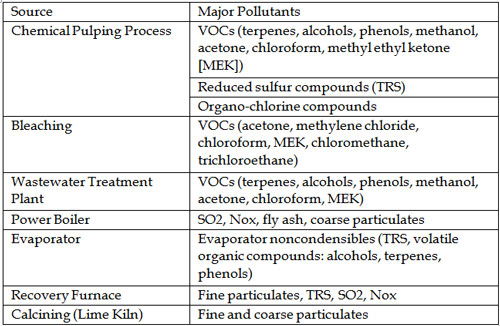Paper and Pulp Waste Basics
May 27, 2014
According to the Environmental Protection Agency [EPA], 27 percent of municipal solid waste (MSW) is comprised of paper waste. Fiber is the main component in paper production and is extracted from two main sources, wood and recycled paper products (United States Environmental, 2012).
There are various kinds of paper mills, and depending on the source of fiber the fabrication processes and byproducts will differ as well (United States Environmental, 2012). The three main types of paper mills are pulp mills (fresh fiber), recycled paper processing mills and hybrid mills utilizing recycled and fresh fiber.
There are two main steps in the production of paper, pulping and bleaching. Pulping is the initial stage and the source of most of the pollution generated by paper industries (Ince, Cetecioglu, & Ince 2011). Pulp is a mixture of cellulose fibers and water and is used as a basis for all paper products (United States Environmental, 2012). Pulp is produced by mechanically or chemically separating wood fibers from woodchips in a process called pulping.

Image: Pulp production in North America and Europe (U. S. Food and Drug Administration, 2004 Database)
Wood preparation, pulping, pulp washing, screening, washing, bleaching, paper machine and coating operations are the most important pollution sources among various process stages (Ince, Cetecioglu, & Ince 2011). About 100 million kg of toxic pollutants are released every year from the paper industry (Ince, Cetecioglu, & Ince 2011).

Image: Air pollutant types and sources from pulp and paper mills (United States Environmental, 2002)
Environmental problems regarding the pulp and paper industry are not limited to high water consumption (Ince, Cetecioglu, & Ince 2011). Solid wastes including sludge generated from wastewater treatment plants and air emissions cause further problems, thus an effective disposal and treatment approach is essential (Ince, Cetecioglu, & Ince 2011).
Paper is an essential commodity that is used internationally. Hazardous Waste Experts do not want to discontinue paper production; we want to provide a means for proper and lawful disposal of pulp and paper industrial waste in an environmentally friendly manner for a nominal fee. In addition most of the waste we manage will be recycled. Give us a call today at 800-936-2311.
(Article by Douglas Macklin)
References: Ince, B.K., Cetecioglu, Z., Ince, O. (2011). Pollution Prevention in the Pulp and Paper Industries, Environmental Management in Practice. DOI: 10.5772/23709. Retrieved From: https://www.intechopen.com/books/environmental-management-in-practice/pollution-prevention-in-the-pulp-and-paper-industries
United States Environmental Protection Agency. (2012). Paper Making and Recycling. Retrieved From: the Environmental Protection Agency website:
United States Food and Drug Administration/Center for Drug Evaluation and Research. (1995). Technology Transfer Network Clearinghouse for Inventories & Emissions Factors: Wood Products Industry FDA public health advisory. Volume I Chapter 10: Washington
Photo Credit: nathansnider via Compfight cc

